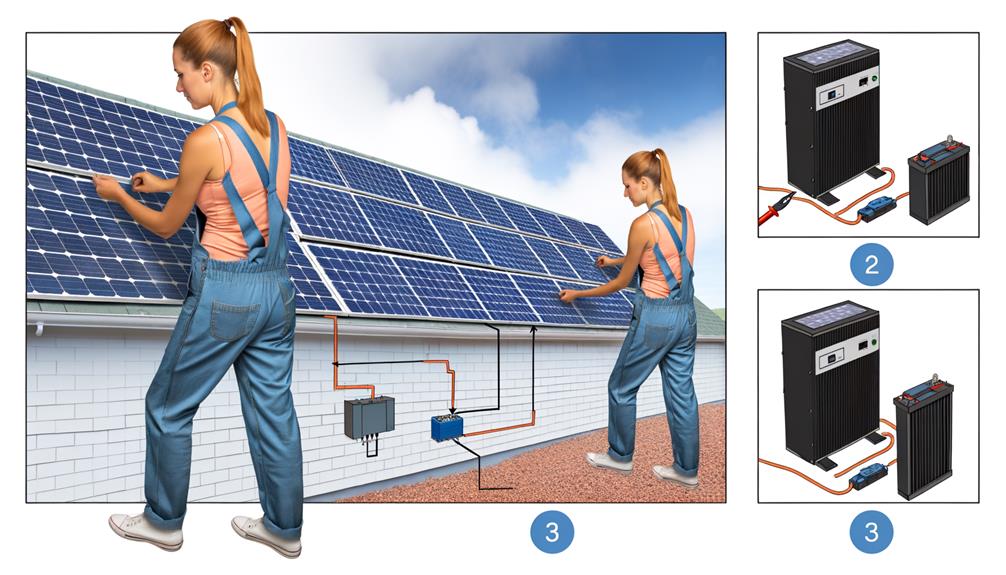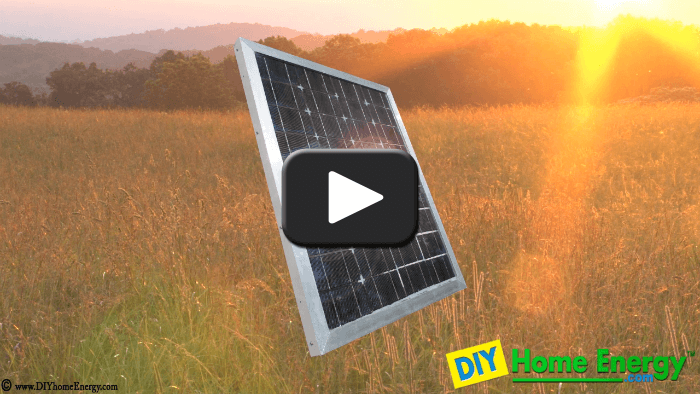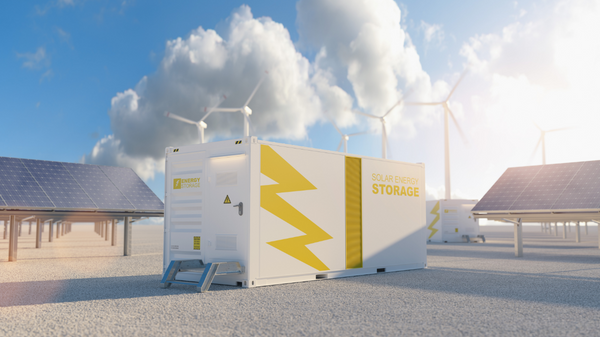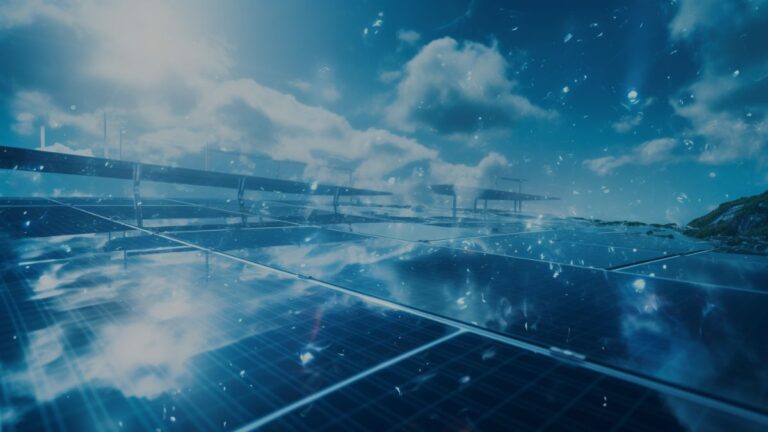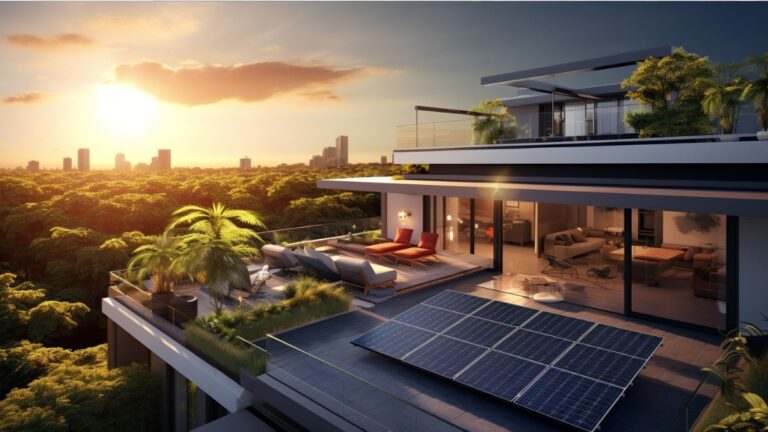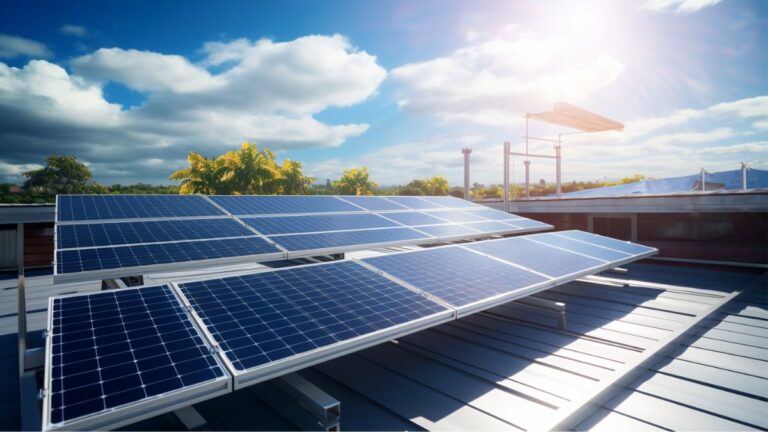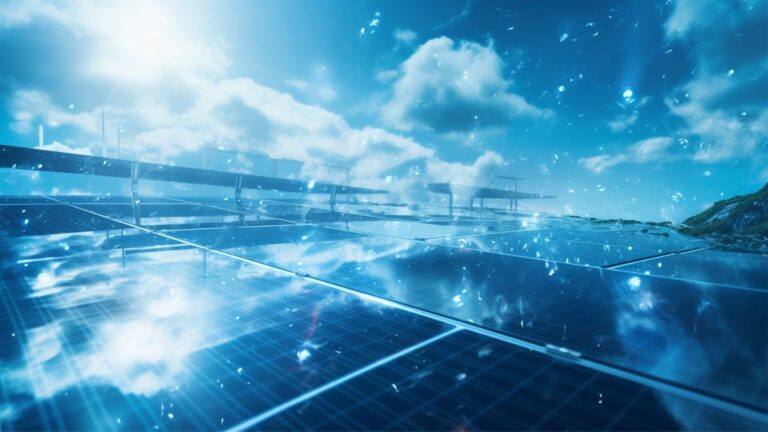Your Detailed Guide to Off Grid Solar Installation
Imagine you find yourself in a remote location, far away from the reach of traditional power grids. You look around and realize that you need a reliable source of electricity to power your daily needs. That’s where off-grid solar installation comes in.
But where do you start? How do you design and install a system that will meet your energy requirements? In this detailed guide, we will walk you through the essential steps, from assessing your energy needs to maintaining and troubleshooting your off-grid solar system.
So, if you’re ready to take control of your own power supply and embrace the freedom of living off the grid, let’s get started.
Key Takeaways
- Calculating energy needs is crucial for selecting the right components for an off-grid solar system.
- It is important to consider the wattage and daily usage hours of each appliance to determine daily energy consumption.
- System inefficiencies during the conversion from DC to AC power should be accounted for when selecting components.
- The choice of solar panels (monocrystalline vs polycrystalline), inverters, batteries, and charge controllers should be based on the energy requirements of the system.
Assessing Your Energy Needs
To accurately determine the size of your off-grid solar system, you need to calculate your energy needs based on the power consumption of your appliances. This will ensure that you have enough solar panels and battery capacity to meet your energy requirements.
When assessing your energy needs, consider the wattage of each appliance and the number of hours you plan to use them daily. Multiply the wattage by the hours of use to calculate the daily energy consumption in watt-hours.
Take into account the inefficiencies of the system, such as losses during conversion from DC to AC power. Once you have determined your daily energy consumption, you can choose the appropriate solar panels, batteries, and charge controller for your system.
Remember to consider factors such as cost, efficiency, and maintenance when selecting the components for your off-grid solar installation.
Choosing the Right Solar Panel System
When selecting the right solar panel system for your off-grid solar installation, it’s essential to consider various factors. This includes the type of solar panels, inverter output, battery options, charge controller requirements, and your specific energy needs.
Compare monocrystalline and polycrystalline solar panels to determine the best fit for your system. Consider the benefits of pure sine wave output when choosing an inverter for your solar panel system.
Evaluate the advantages of lithium-ion batteries when selecting an energy storage option for off-grid settings. Determine the optimal charge controller to monitor and optimize current flow for efficient charging in your solar panel system.
Calculate energy needs and system size based on appliance power consumption to ensure the right solar panel system for your requirements.
Designing Your Off-Grid Solar System
You can determine the optimal design for your off-grid solar system by calculating your energy needs based on appliance power consumption.
First, you need to select the type of solar panels that best suit your requirements. There are two types to choose from: monocrystalline and polycrystalline. Consider the efficiency and cost of each option.
Next, you need to select an inverter. For efficient and reliable power conversion, opt for pure sine wave output inverters. They provide clean power that’s suitable for most appliances.
Deep Cycle Batteries are essential for storing the energy produced by your solar panels. Choose a battery bank and inverter that can handle the power rating and current rating of your system.
Two types of charge controllers are commonly used: Pulse Width Modulation (PWM) and Maximum Power Point Tracking (MPPT). Calculate how much energy you need to store and select the appropriate charge controller.
Lastly, consider the average sun hours in your location to determine the number of solar panels you need to install and the size of your battery bank.
Related Post: DIY Off-Grid Solar System: The Ultimate Guide to Power Your Paradise.
Installing the Solar Panels and Components
Now that you have determined the optimal design for your off-grid solar system, it’s time to move on to the practical aspect of installing the solar panels and components.
To ensure maximum efficiency, install the solar panels in shade-free areas and face them towards the sun. Connect all components following correct polarity and use different colored wires for positive and negative connections.
Protect the solar panels during connection to avoid potential damage from sudden incoming current. Select an inverter with pure sine wave output for efficient and reliable power conversion. Consider using lithium-ion batteries for higher energy capacity and greater safety in off-grid settings.
Related Post: 10 Best DIY Solar Panel Kits for Off-Grid Power.
Maintaining and Troubleshooting Your Off-Grid Solar System
Regular maintenance and troubleshooting are essential for ensuring the optimal performance and longevity of your off-grid solar system.
To meet your energy needs, it’s important to understand the two main types of current: direct current (DC) produced by solar panels and alternating current (AC) used in most household appliances.
To reduce the overall system cost, you need to convert the direct current into alternating current using an inverter.
Select the solar panels that produce enough DC power to meet your energy needs and connect them to a DC battery bank. Use deep cycle batteries in series to store energy efficiently.
To determine the amount of current needed, use an online calculator based on the amount of sunlight and the number of hours you need power.
Monitor the charge levels of your batteries and use an MPPT Solar Charge Controller to optimize charging efficiency.
Regularly inspect and clean the solar panels, check electrical connections, and troubleshoot any issues with inverter performance.
Frequently Asked Questions
What Do I Need for a Complete Off-Grid Solar System?
To have a complete off-grid solar system, you’ll need solar panels, battery storage, an inverter, a charge controller, a backup generator, a wiring system, mounting equipment, an energy monitoring system, and consider maintenance and cost.
How Big of a Solar System Do I Need to Go Off-Grid?
To determine the size of your off-grid solar system, analyze your energy consumption, calculate the load, consider battery bank requirements, select an appropriate inverter, determine solar panel capacity, integrate a backup generator, and estimate costs. Maintenance and troubleshooting tips are also essential.
Can I Install My Own Off-Grid Solar?
Yes, you can install your own off-grid solar system. It offers the freedom to go green and save money. Learn the pros and cons, use essential tools, avoid common mistakes, and follow step-by-step instructions for a successful DIY installation.
How Do You Plan an Off-Grid Solar System?
To plan an off-grid solar system, start by calculating energy consumption and sizing the battery bank. Next, select the right solar panels, choose an inverter, and assess available sunlight. Determine optimal tilt and orientation, consider backup power options, evaluate maintenance requirements, and budget accordingly.
WATCH TO LEARN MORE ABOUT DIY HOME ENERGY NOW!
